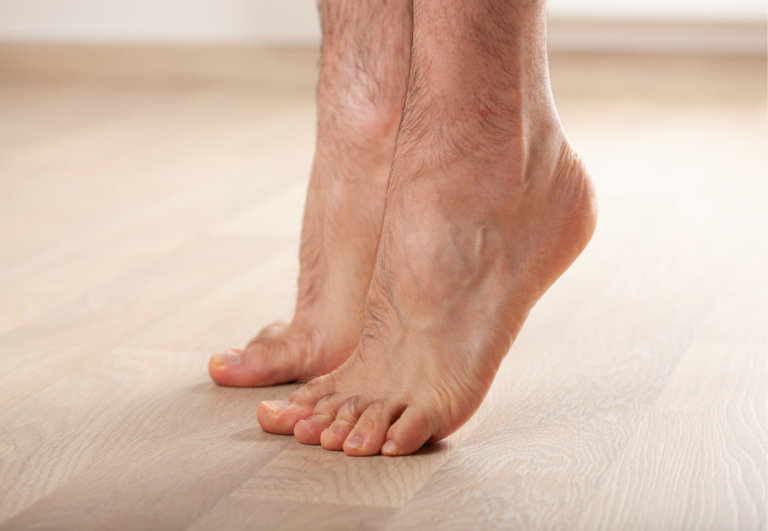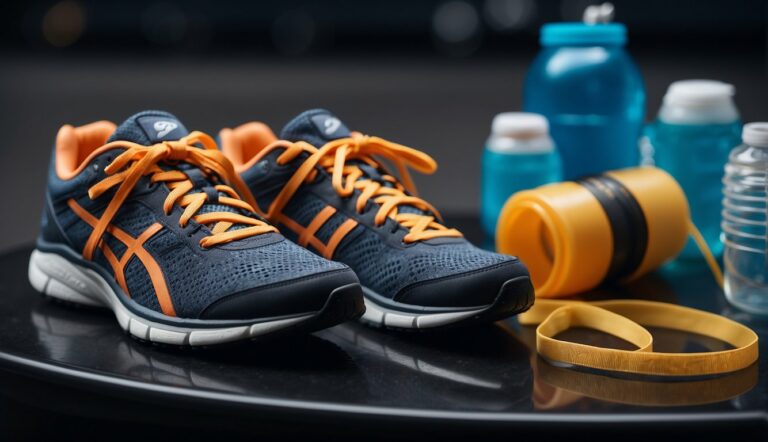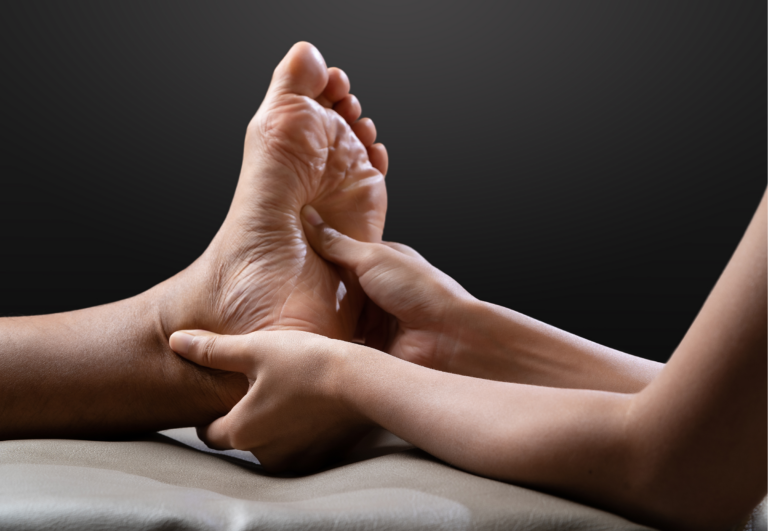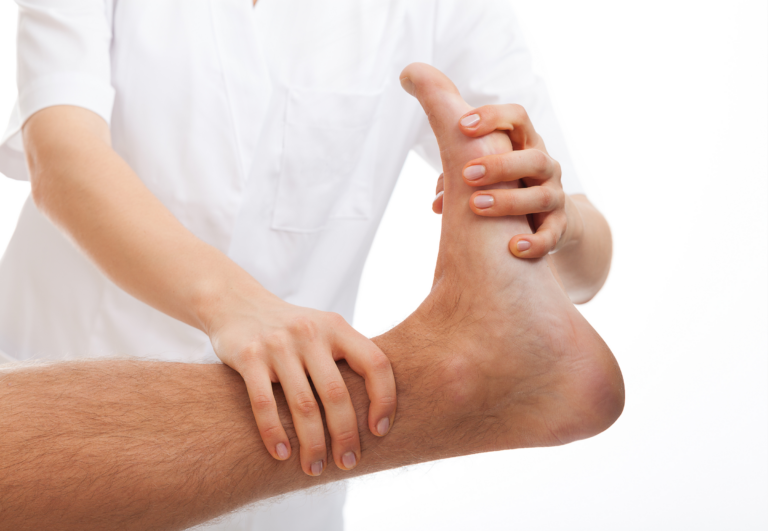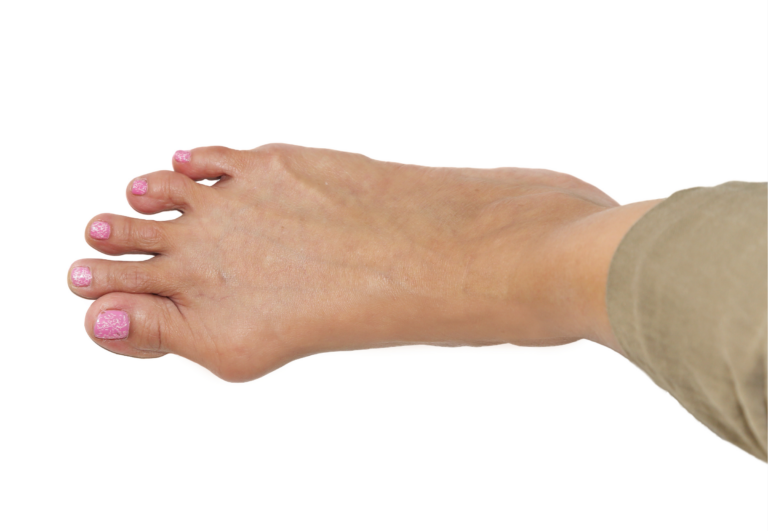Toe Spacer Exercises: Optimize Foot Health and Increase Flexibility
Toe spacers are simple yet effective tools I regularly recommend for anyone looking to improve foot health and add comfort to their daily life. Through consistent use of toe spacer exercises, many individuals find relief from common foot ailments. The exercises are designed to realign and strengthen the intrinsic muscles of the foot, promoting better posture and stability.
Incorporating toe spacer exercises into one’s routine can significantly enhance foot health. Regular practice can aid in correcting toe crowding, a condition where toes press against each other, leading to discomfort and potentially other foot issues. My experience with these exercises has shown that they not only improve toe alignment but also contribute to overall foot function and health.
By performing deliberate toe-stretching exercises with spacers, the feet can become more resilient. This resilience can be particularly important for reducing discomfort from conditions such as bunions. Having helped many with their foot concerns, I stand by the beneficial role that toe spacers can play in maintaining and improving foot strength and comfort.
Toe Spacer Exercises – a Step-by-Step Routine
Toe spacer exercises are designed to be done with toe spacers, which can help improve toe alignment, increase flexibility, and strengthen the muscles of the feet.
Here’s a step-by-step routine for exercises using toe spacers:
- Toe Spacer Acclimation:
- Begin by wearing toe spacers for a few minutes each day to get used to them.
- Gradually increase the duration as your feet become more comfortable with the spacers.
- Toe Splay:
- Sit or stand with the toe spacers inserted.
- Try to actively spread your toes apart without using your hands.
- Hold the splay for a few seconds, then relax.
- Repeat for 10-15 repetitions to strengthen the muscles that promote toe abduction.
- Toe Presses:
- While seated or standing, press each toe down into the ground.
- Try to isolate the movement to one toe at a time.
- Hold each press for a few seconds, then release.
- Perform 10 repetitions for each toe to enhance individual toe strength.
- Heel Raises:
- Stand with toe spacers in and feet hip-width apart.
- Lift your heels off the ground, rising onto the balls of your feet.
- Lower back down with control.
- Perform 2-3 sets of 10-15 repetitions to strengthen the calves and support the arches.
- Marble Pickup:
- Place marbles on the floor and a small bowl nearby.
- Use your toes to pick up each marble and place it into the bowl.
- Continue for 1-2 minutes to improve toe dexterity and strength.
- Towel Curls:
- Place a towel flat on the floor and sit with your feet on one end.
- Use your toes to scrunch the towel towards you, then smooth it out again.
- Repeat for 2-3 sets of 10-15 repetitions to build strength in the plantar muscles.
- Walking with Toe Spacers:
- Simply walking around your home with toe spacers can be beneficial.
- Focus on pressing each toe down during the walking motion to strengthen the foot muscles.
- Balance Exercises:
- Stand on one foot with toe spacers in to challenge your balance.
- Try to maintain the position for 30-60 seconds, then switch feet.
- This engages the muscles in the feet and toes that are responsible for stability.
- Toe Yoga:
- With toe spacers in, attempt to lift each toe individually, starting with the big toe.
- Try to keep the other toes down while lifting one toe at a time.
- Repeat for 5-10 repetitions per toe to improve toe independence and strength.
- Cool Down and Stretch:
- After completing your exercises, remove the toe spacers and give your toes a gentle wiggle to relax them.
- Perform some light stretches for your toes, feet, and calves to maintain flexibility.
Be sure to start with a few repetitions and gradually increase as your strength and flexibility improve. If you experience any pain or discomfort during these exercises, stop immediately and consult with a healthcare professional. Regular use of toe spacers during exercises can help improve your overall foot health and function.
Toe Spacer Overview
Toe spacers are designed to improve toe alignment and foot health. Made from various materials such as silicone or gel, these devices can provide cushioning and support for better foot mechanics.
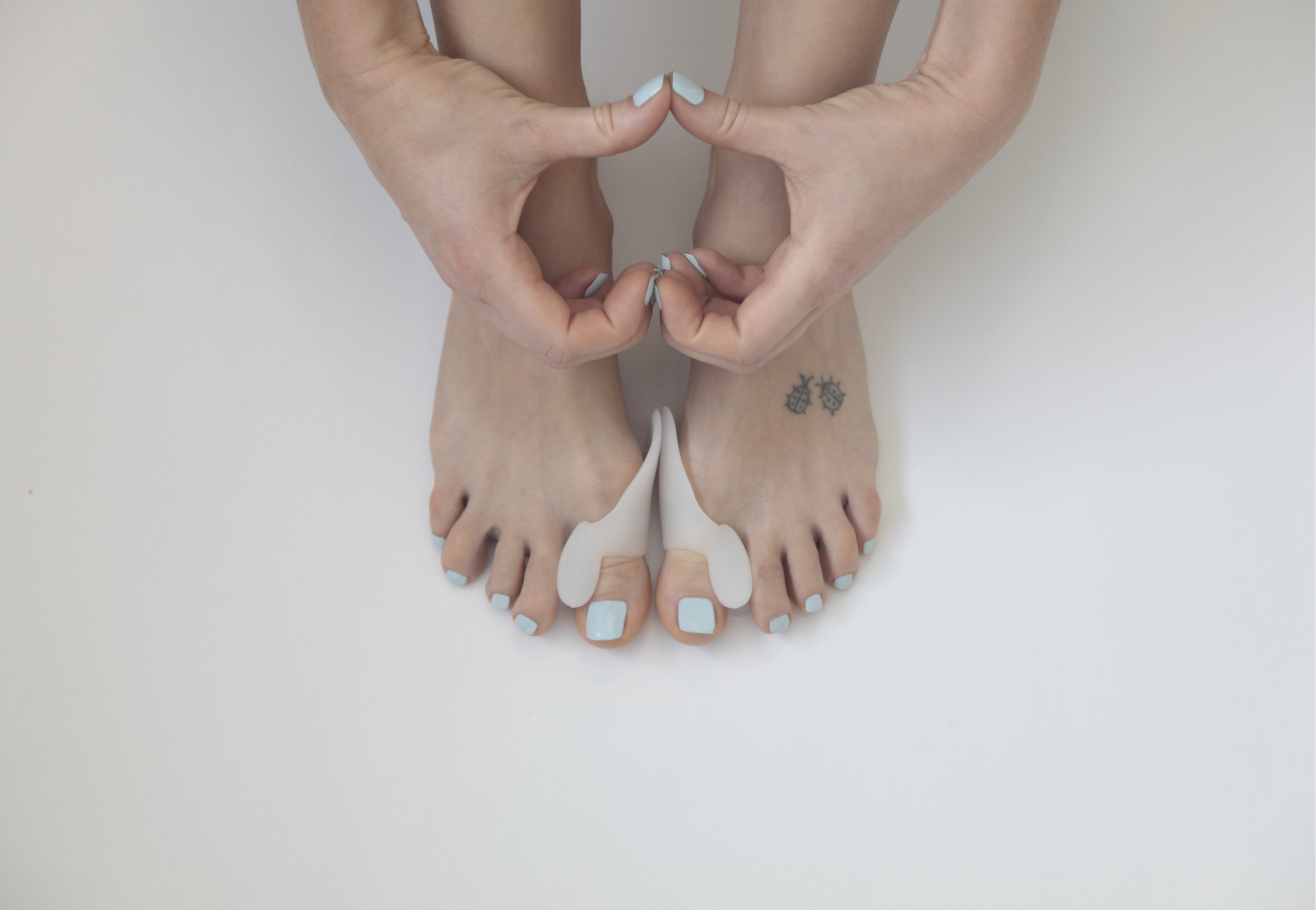
Types of Toe Spacers
I’ve observed that toe spacers usually come in silicone or gel materials. Silicone tends to be more firm, offering consistent support, while gel can provide a softer cushioning effect. Both types work to separate the toes and can be integrated into different types of footwear, ensuring they’re versatile for daily use.
- Silicone Toe Spacers: Durable, stable, and hold their shape well.
- Gel Toe Spacers: Softer, flexible, and offer more cushioning.
Benefits of Using Toe Spacers
The primary benefit I’ve experienced with toe spacers is improved toe alignment, which can lead to better balance, stability, and mobility. Regular use aids in increasing flexibility and strength in the intrinsic foot muscles. Here are the key benefits:
- Alignment: Helps in maintaining proper toe spacing to prevent overcrowding.
- Flexibility: Encourages toes to spread naturally, which contributes to mobility.
- Stability: Better toe alignment can enhance overall balance and foot stability.
Choosing the Right Size
Selecting the correct size of toe spacers is crucial for comfort and effectiveness. To ensure the right fit, consider the size and shape of your toes and the type of footwear you’ll be using. Here’s a simple guideline I follow:
- Measure your foot width: Ensure there’s enough space in your shoes for the spacers.
- Test for comfort: The spacers should not cause pain or discomfort.
- Compatibility with footwear: Some spacers fit better with wider toe box shoes.
| Toe Width | Spacer Size | Material | Best Used For |
|---|---|---|---|
| Narrow | Small | Silicone | Daily wear in snug-fitting shoes |
| Medium | Medium | Gel | Enhanced cushioning in casual shoes |
| Wide | Large | Either | Spacious footwear, sports shoes |
Toe Spacer Exercises for Beginners
Using toe spacers can significantly improve foot health by enhancing mobility, strengthening foot muscles, and contributing to better balance. As a user of toe spacers, I’ll guide you through the proper placement and basic stretching exercises that beginners should start with.
Toe Spacer Placement
When introducing toe spreaders to your routine, it’s important to ensure they fit correctly to prevent discomfort. First, clean your toe spacers and your feet. I prefer to apply them to my feet when they’re dry to prevent any slipping. To place them, I slip the toe separator gently between each toe, starting from the big toe and moving outward. The toe spreaders should fit snugly, without causing pain. If you feel any discomfort, I recommend choosing a different size or adjusting them until comfortable.
Basic Stretching
Once the toe separators are in place, it’s time to begin with some gentle stretches. Start by sitting in a comfortable position. I usually rest my heels on the ground and point my toes upward towards the ceiling:
- Toe splay: Keeping the spacers in, I spread my toes as wide as possible, hold for a few seconds, and then relax. I repeat this 10 times.
- Toe flex and point: From the same position, I flex my toes back towards me, then point them away, creating a good stretch throughout my foot. This set I do about 10 times as a warm-up or cool-down.
These exercises are a simple start to building strength and mobility in the foot muscles. Remember to start slow and never push to the point of pain.
Advanced Toe Spacer Workouts
Incorporating toe spacers into advanced workouts can significantly enhance foot strength and stability, important both for athletes and active individuals. I’ll guide you through strengthening routines and balancing techniques that utilize toe spacers for optimal performance.
Strengthening Routines
Toe Curls:
- Setup: Sit with your feet flat and place a towel on the floor in front of your toes.
- Action: With toe spacers in place, curl your toes to scrunch the towel towards you.
- Repetitions: Perform 3 sets of 10 curls.
Single-leg Balances:
- Setup: Stand on one foot with toe spacers inserted, near a wall for support if needed.
- Action: Maintain balance while gently bouncing on one leg.
- Duration: Hold for 30 seconds to 1 minute per leg.
Balancing Techniques
Yoga Tree Pose:
- Setup: Begin in a standing position with toe spacers.
- Action: Shift your weight onto your right foot, place the left foot on the inside of your right thigh, and bring hands into prayer position. Hold, then switch sides.
- Duration: Hold each side for 30 seconds to 1 minute.
Single-Leg Toe Touches:
- Setup: Stand on one foot with spacers in place.
- Action: Hinge at the hips to touch your toes, keeping the other leg extended backward.
- Repetitions: Do 3 sets of 8 repetitions on each leg.
These advanced workouts are designed to challenge your foot strength and stability in unique ways. Regular practice will help improve balance and performance in activities such as walking, running, and other sports. Remember, consistency is key to seeing progress with toe spacer exercises.
Condition-Specific Toe Exercises
Toe spacers often serve as an effective tool in foot mobilization and pain relief, particularly for those dealing with foot deformities or certain medical conditions. By improving toe alignment, they can aid in the recovery process for conditions like bunions and hammertoes, and may help alleviate joint pain associated with arthritis and diabetes through better circulation and an improved gait.
For Bunions and Hammertoes
- Place toe spacers between each toe to gently separate and realign them.
- Perform a toe flex by pressing your toes down against a flat surface and holding for a few seconds.
- Release and then lift your toes up for a few seconds; repeat this alternating flex and lift motion.
- With toe spacers in place, gently stretch each toe away from the others and hold for a few seconds.
- Focus on lengthening rather than forceful pulling to avoid any strain.
Table 1: Exercises for Bunions and Hammertoes
| Exercise | Description | Frequency |
|---|---|---|
| Toe Flex | Press toes down, then lift up, hold each for 5 seconds | 10 reps, twice daily |
| Toe Stretch | Gently stretch each toe sideways, hold for 10 seconds | 5 reps per toe |
For Arthritis and Diabetes
Arthritis-Focused Mobilization:
- Insert toe spacers to create ample space between toes.
- Gently roll the foot from heel to toe to promote joint mobility.
- Use a soft ball to massage the bottom of the foot, applying light pressure to soothe soreness.
Diabetes Circulation Boost:
- With toe spacers between your toes, perform ankle rotations to improve blood flow.
- Point and flex your feet to further encourage circulation, being mindful of any sensations.
Table 2: Exercises for Arthritis and Diabetes
| Exercise | Description | Frequency |
|---|---|---|
| Foot Roll | Gently roll from heel to toe | 5 mins, once daily |
| Ankle Rotations | Rotate ankles, first clockwise then counter-clockwise | 10 reps, twice daily |
I recommend starting with light exercises and gradually increasing intensity while monitoring your body’s response. Consistent use of toe spacers can enhance the therapeutic effects of these exercises and may complement other treatments such as physical therapy or orthotics. Always consult a healthcare professional before starting any new exercise regimen, especially if you have pre-existing conditions like arthritis or diabetes.
Incorporating Toe Spacers Into Daily Routine

Toe spacers have become a significant part of my regimen to maintain foot health. They’re instrumental in aligning toes for better balance and mobility.
Throughout the Day
Morning: I start my day by fitting toe spacers comfortably between my toes, ensuring they’re in place before taking on daily tasks. These devices help in keeping my toes aligned during routine movements, promoting foot health. They can be worn while performing gentle foot exercises as part of a morning routine.
Workday: Even during work, especially if it involves extended periods of sitting, I periodically slip on the toe spacers. A few minutes every hour can contribute to better toe alignment and prevent cramping.
Evening: After a day of wearing proper footwear that accommodates toe spacers, I like to end with some cooling-off stretches. This not only helps my feet recover from the day’s activities but also prepares them for the following day.
During Physical Activities
Warm-Ups: Before engaging in any physical activities, I integrate toe spacers in my warm-up exercises. This helps improve mobility and sets the foundation for better balance.
Performance: For athletes, toe spacers can be a game-changer. During workouts, they aid in distributing weight evenly across the foot, enhancing stability and performance. I’ve noticed an improvement in my balance when using them during my regular exercise routine.
Cool-Downs: Post-exercise, I make it a point to use toe spacers again during cool-down stretches. This helps in recovery by allowing my feet to rest in a natural alignment, minimizing the risk of post-exercise soreness.
By making toe spacers part of your daily routine and physical activities, you can support your feet in maintaining strength, balance, and overall foot health. Always consider consulting a podiatrist if you’re uncertain about fitting toe spacers into your routine or if you experience discomfort.
Consulting Healthcare Professionals
As an experienced advocate for foot health using toe spacers, I want to stress the importance of involving healthcare professionals when dealing with foot issues.
When to See a Podiatrist
- Toe Deformities: Including bunions (hallux valgus), hammer toe, and overlapping toes
- Persistent Pain or Friction: When discomfort from corns, calluses, or ingrown toenails doesn’t improve
- Foot Structure Concerns: Issues like flat feet which may require orthotics for arch support
- After Injury: If pain sustains post-injury, potentially aggravating toe misalignment
A podiatrist, or DPM (Doctor of Podiatric Medicine), specializes in diagnosing and treating foot problems. They can advise on the use of toe spacers for conditions such as hallux valgus, hammer toe, or when genetics contribute to rheumatoid arthritis affecting foot health.
| Reason to Consult a Podiatrist | Potential Treatments |
|---|---|
| Bunions | Orthotics, toe spacers, surgery |
| Corns/Calluses | Debridement, cushioning, spacers |
| Hammer Toe | Corrective footwear, physical therapy |
| Rheumatoid Arthritis | Anti-inflammatory medication, specialized spacers |
Post-Surgery Recommendations
- Follow-Up Care: Seek guidance on using toe spacers for support during recovery.
- Physical Therapy: Often necessary to restore foot function and gait.
- Enhanced Circulation: Toe spacers may assist in maintaining circulation post-surgery.
After surgery for toe deformities or related foot issues, consult with your doctor before incorporating toe spacers into your rehabilitation process. They can provide a tailored plan, including recommendations for insoles and physical therapy, to facilitate pain relief and promote healing. Remember, each foot has a unique shape and functional needs; thus, personalized assessments are vital for optimizing recovery and preventing future injuries.

